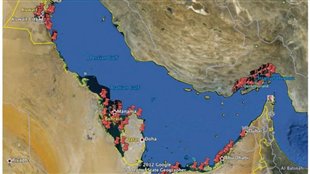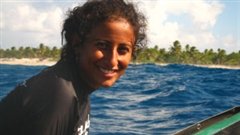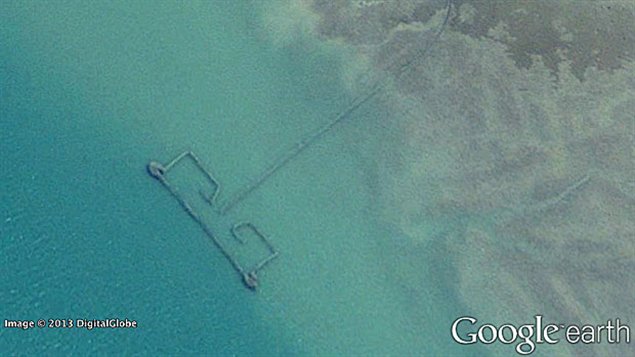A University of British Columbia PhD student has found that there is massive under-reporting of fish catches in the Persian Gulf.
Dalal Al-Abdulrazzak,is a Ph.D. student with the University of British Columbia Fisheries Centre “Sea Around Us Project”.
She is currently working on ocean governance with the U.N. in New York. She says the estimates she and the UBC team developed indicate fish catches may actually be six times higher than that reported to the U.N.

The study is reported in the Oxford Journals, ICES Journal of Marine Science
The UBC student grew up in Kuwait where she remembers seeing many fishing weirs in shallow intertidal waters.
She says they were so common that she was surprised at the low catch numbers being reported to the U.N. and that more effort should be made to improve the quality of fishing statistics
Using google satellite images she thought she would come up with her own figures. After about four months of examining satellite images and careful counting, she and the UBC came up with a figure of 1,656 weirs but when corrected for poor visibility from images captured between 2005-2010, the team determined a figure of 1900 weirs.
Dalal Al-Abdulrazzak then asked fishery scientists in the Gulf to estimate the average annual catch of a weir.
Extrapolating the numbers the UBC research team came up with a figure of between 21-41 thousand tonnes (median 31,000) of fish annually taken from the gulf by Kuwait, Saudi Arabia, Qatar, the United Arab Emirates, Iran, and Bahrain.
The UBC researchers used a Google ruler tool to measure the size of each weir’s traps and then calculated daily fish catch based on historical records, the length of the fishing season and composition of fish species, such as mackerel, crab, lobster and sardines, at each location.
The rough estimate of 31 thousand tonnes is six times higher than that reported to the UN Food and Agriculture Organization in 2005 (FAO).

Althoug the catch figure is an estimate only, she feels its far more accurate than official reported figures. For example, Saudi Arabia, Qatar and Iran officially reported no weir fishing catches at all
Daniel Pauly,is principle investigator with the UBC Sea Around Us Project and co-author of the report.
“Time and again we’ve seen that global fisheries catch data don’t add up,” he says. “Because countries don’t provide reliable information on their fisheries’ catches, we need to expand our thinking and look at other sources of information and new technologies to tell us about what’s happening in our oceans.”
The study found Bahrain had the most weirs (50%) and estimated catches were 142% greater than that reported to the FAO. Kuwait reported the most accurate figure, within about 300 tonnes of the UBC team’s estimated figure
Al-Abdulrazzak says that small-scale fisheries often go unreported as governments think it’s not important.
She says however that weir fishing can be damaging to marine ecosystems as the weirs scoop up juvenile fish from shallow waters long before they can reproduce.
The PhD student says she used google because it’s free, accessible and easy. She adds “I was able to do it with very few resources and just access to the internet and a little bit of patience… I’m hoping that this will gain some momentum and more people will start using this technique.”
It’s just the latest use of Google Earth satellite images to monitor environmental infractions or destruction, such as illegal logging in remote locations
While Al-Abdulrazzak’s study, published Tuesday in the ICES Journal of Marine Science, focused on the Persian Gulf, she noted that weirs are used for fishing “practically worldwide.”
ICES Journal of Marine Sciences Fishing report







For reasons beyond our control, and for an undetermined period of time, our comment section is now closed. However, our social networks remain open to your contributions.